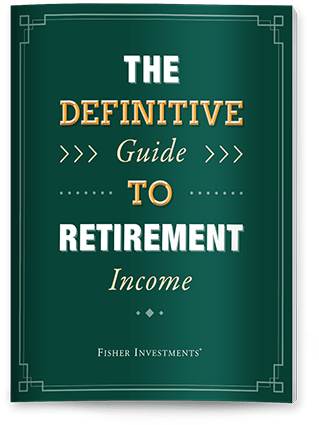Personal Wealth Management / Market Analysis
Digging Into August’s Reader Mailbag
Another round of As to your Qs.
It is back-to-school season, and back to the mailbag for us! What were you fine folks curious about this month? Read on.
Does the fast-paced news media environment make gauging sentiment harder?
Not really. While the news cycle may move quickly, tone tends not to shift fast. Meaning, the events being covered may change rapidly day to day, week to week, but the undercurrent of negativity or positivity tends to be steadier and slower-moving. News coverage both reflects and influences sentiment, so it is more the tone and angle that we monitor for sentiment-measuring purposes. For instance, if a slew of economic data come out, and all look largely fine but the coverage routinely looks for clouds in the silver lining, that tells us sentiment is probably too low. Or, if we see a steady stream of headlines dismissing developments we consider negative, that is a sign sentiment is probably getting hot. The fast news cycle gives us more to sift through, but we don’t think it obscures trends. If anything, it can make them more apparent.
A side note: In economics and markets coverage, the tenor of media is not always negative. It often is, but we are occasionally asked how we would judge a shift because media is perpetually negative. But there are many times when media will celebrate things like the share of companies beating earnings estimates, “resilient” economic data or other. The tone may not be ebullient all the time, but presuming perma-negativity is too much.
What is the relationship between the stock market and unemployment?
A lot simpler than most coverage makes it out to be. Unemployment is a late-lagging economic indicator. This is because economic growth creates hiring, while economic contraction unfortunately forces some companies to downsize. On both upswings and downswings, employment trends tend to follow broader economic trends at a lag. Hiring employees is a big investment of time and money for small and large firms alike, given training costs and the time it takes folks to get ramped up. Hence, firms generally won’t hire more until higher sales and production necessitate higher headcount and warrant, almost necessitate or force, the investment. And they will do everything they can not to let those folks go once they are up to speed, motivating businesses to cut costs without cutting headcount when things start looking dicey, laying folks off only as a last resort.
Stocks, meanwhile, pre-price economic trends. They are forward-looking. This means they pre-price economic growth—the same growth that eventually filters through to labor market measures. So stocks predict growth, while jobs data confirm past growth. As a result, jobs data do nothing to help anyone forecast the stock market. They are exceedingly backward-looking. Whatever they show, stocks will have priced it months prior.
What are your thoughts about Trump ruling via executive order?
The same as our thoughts on all his predecessors doing the same—as always, we set aside political party and politicians’ personalities. Stocks are agnostic on these things and politics in general, and so are we.
Regardless of who is president, we think there are some things to keep in mind with executive orders.
- Many executive orders, including some that garner the most media attention, aren’t very relevant to stocks or macroeconomic activity.
- Tariffs, which presidents from both parties have implemented via executive order, are an exception. Most other orders that could be relevant to markets tend to direct regulatory agencies to study the effects of a potential policy change and the rule changes that would be required to put those new policies in motion. They rarely actually change policy at a broad level and are more about how it is implemented and/or enforced. Mostly, you get small tweaks to specific industries.
- Policy changes create winners and losers, and our key task is always determining who the winners and losers of a given change are and whether the market underappreciates either.
- Surprises move markets most. Policy changes that go through the legislative process tend to happen publicly and slowly, letting markets price them gradually—sapping surprise power for good or ill. Changes that happen outside this process, whether at the executive or agency level, tend to be less public, potentially carrying more surprise power.
- Executive orders tend to get outsized attention, which helps sap surprise power, minimizing their potential benefits or drawbacks for markets. Usually, people overestimate their consequences, which creates work for us, your friendly MarketMinder editors, but generally helps markets deal with them efficiently.
Why are value stocks so common in Europe?
Here are two big reasons. One, value stocks tend to finance growth more with bank lending than corporate bond issuance, while growth stocks will often use their big balance sheets as leverage to tap investors directly in corporate bond markets. US capital markets are more robust, with a huge corporate bond infrastructure, so the US tends to be a magnet for growth stocks.
Two, style and sector tend to have a big overlap. Growth stocks tend to concentrate in Tech and Tech-like industries, which are heavily in the US. There are a lot of reasons for this, tied to reputation, Silicon Valley’s history and a US regulatory environment that is overall more favorable to Tech firm creation and growth than Europe’s is. We aren’t casting judgment here, just sharing observations. Meanwhile, Europe tends to have higher weightings in Industrials and Financials, which are traditionally value-heavy. We guess it is all a little bit chicken and egg, but those are the general trends.
What would you tell a 20 or 30 year-old about investing at their age?
To do it! The earlier you start socking away money and earning market-like returns on it, the more time you have for compound growth to work its magic and build up your nest egg.
We know this probably sounds obvious, but we also know from experience and conversation that it is very easy for younger folks to talk themselves out of investing, because everyday life is expensive. Friends, we get it. Food and rent eat up a huge part of the budget. Wedding planning. Kids. There are a million reasons contributing to an IRA or 401(k) or putting money aside in a brokerage account may seem like a luxury pursuit that doesn’t fit with your life right now. It might seem like a thing to do when you are older and more established.
If you delay, though, you risk never feeling sufficiently established, because there are always more expenses, more milestones you have to hit, more reasons you won’t feel like you have reached a point where you have the cash to spare. If you start early, you train your brain to see putting money in the market as part of your budget. Logic, not feelings, is your friend here.
We aren’t going to tell you to cut out coffee or avocados (we indulge in both, after all). We will simply say this: Make a budget. Note all your income and expenses, and set spending and saving parameters. If you don’t yet have an emergency fund, get that squared away first. And then work a line item into your budget, however small, for investing. And then stick to it. If you have a 401(k) with employer match, make it a goal to eventually max out your annual contributions. Start small, if you have to, and work your way up. Investing is all about harnessing the long-term power of compound growth to turn small sums into seemingly large ones in time. Someone 20 or 30 has a huge opportunity to capitalize on that.
And as you invest in your 20s and 30s, remember you have a very long time horizon, with ample time to ride the market’s recovery after downturns. Don’t limit your financial potential by loading up on low-returning and less volatile assets. Those are for people with shorter time horizons and more near-term cash flow needs. Stocks are your friend, and if you have no desire to devote time and energy to studying the market and diversifying a portfolio on your own, low-cost index funds work just fine.
If you would like to contact the editors responsible for this article, please message MarketMinder directly.
*The content contained in this article represents only the opinions and viewpoints of the Fisher Investments editorial staff.
Get a weekly roundup of our market insights
Sign up for our weekly e-mail newsletter.

See Our Investment Guides
The world of investing can seem like a giant maze. Fisher Investments has developed several informational and educational guides tackling a variety of investing topics.




